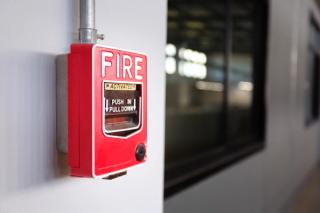
Using ‘value added’ compliance to achieve net-zero
- Post Date
- 23 May 2022
- Read Time
- 4 minutes

Bob’s article below discusses how businesses within manufacturing and industry can make compliance “value added” to consider all routes to decarbonisation. By considering model decarbonisation from grid, working practices, technology, and projects, combined with value added legislative compliance, companies can achieve a robust and value-added route to net zero.
Looking at the big picture, net zero is at the forefront of sustainability agendas in industry, in support of the Paris Agreement and the Energy White Paper, and with the objectives of limiting global warming to well below 2⁰C and achieving national net zero by 2050. In line with this larger goal, companies can set shorter-term science-based targets for 5-15 years; these can be submitted to the Science Based Targets initiative (SBTi) to be approved and can then be announced to stakeholders and reported on.
Additionally, there is a standard to which many net zero ambitions are being made - PAS2060. This is the specification published by the British Standards Institution which details how to demonstrate carbon neutrality. The public declarations to this standard are very varied, with a wide range of inclusions and exclusions, and intentions to expand the scope.
With these goals being broad, varied, and regularly updated, an alternative for a more consistent method towards achieving net zero is to build on the firm requirements of legislative compliance.
However, there are many aspects to compliance which alone can be disjointed and may be seen only to serve their own purposes. In the UK, these include ESOS, IED permits and BREF implications, and CCAs. Rather than focussing on these individual elements of compliance, an effective solution is to plan all of these requirements within a thorough net zero strategy - expanding compliance beyond box ticking to achieve long term added value.
Developing an effective net zero strategy should therefore be developed in stages.
- Understand your value chain
It is tempting to declare intentions for net zero without having done the groundwork. An initial study is recommended to define and quantify all upstream and downstream Scope 1, 2 and 3 emissions. These are well described in PAS2060. An educated decision can then be made as to what to include and exclude.
- Define the boundary limits to which net zero will be applied
Current declarations to PAS2060 may only include Scope 1 and 2 emissions. A few declarations include all upstream Scope 3 emissions, whilst others have selective Scope 3. Downstream Scope 3 emissions are even more selective.
- Review existing decarbonisation
There will be existing planned investments and changes that will impact decarbonisation. In addition, there is forecast decarbonisation of the electricity grid, desired decarbonisation of the gas grid through hydrogen and renewable gas, and transport grid decarbonisation including the phase out of diesel and petrol vehicles.
- Make compliance value added
The corporate drivers and requirements must be integrated with compliance requirements to give cost effective and timely solutions:
- ESOS assessments do not have to be only energy efficiency. Combining energy, water, carbon, waste and resources into single assessments will give a holistic view of the immediate and medium-term opportunities.
- IED permits are held by large organisations and the permit holders are expected to respond to environmental best available techniques as described in the BREF. Many of these best practices will have carbon benefits.
- CCA carbon reduction targets should be taken as the opportunity to implement improvements and to plan the implementation strategy. The CCA reduction should be taken as the minimum rate of decarbonisation.
- Plan ahead for the energy transition
Warning has been given that the UK is pushing for electrification, a hydrogen economy, and higher renewables. Readiness through technology investment decisions and matching of planned changes in working practices is essential.
- Include changing working practices, such as working at home and less business travel
COVID has been a major issue for many businesses but most have adapted. There are decarbonisation benefits in some of the changes such as working partially from home and less business travel.
- Develop dynamic carbon model to 2050
A dynamic carbon model with all the detail above should be constructed, allowing the boundary limits and inclusions to be adjusted. A model would also allow carbon compliance requirements to be overlayed on net zero, as well as scenario and sensitivity analysis. For example, “what if” analysis on grid decarbonisation and future technology development can be conducted to ensure any declared net zero target is realistic and robust.
- Public declaration based on robust modelling and analysis
By conducting scenario and sensitivity analysis using a dynamic tool, this will allow a robust and flexible net zero strategy to be developed, and will allow this to be adjusted as circumstances develop.
SLR’s team can support you throughout the stages of developing an effective net zero strategy. For an initial conversation about your business, don’t hesitate to get in touch.
Recent posts
-

-

-

Understanding sound flanking: Fire alarm speaker cable conduits in multi-family buildings
by Neil Vyas
View post